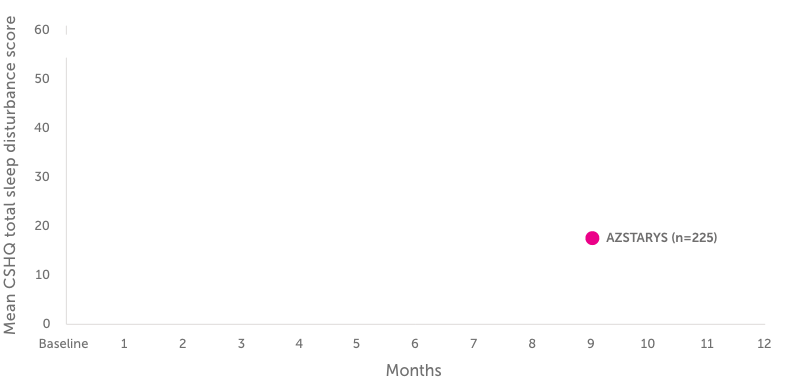Due to the open-label study design, conclusions and significance cannot be extrapolated.1
Sleep behavior was assessed in an open-label, long-term safety trial by using the modified CSHQ in patients aged 6 to 12 years.2,a,b
- Before treatment, most patients reported sleep disturbances (mean CSHQ score: 53.5)
- Mean sleep quality scores improved slightly during treatment (mean CSHQ score at Month 12: 49.1)






